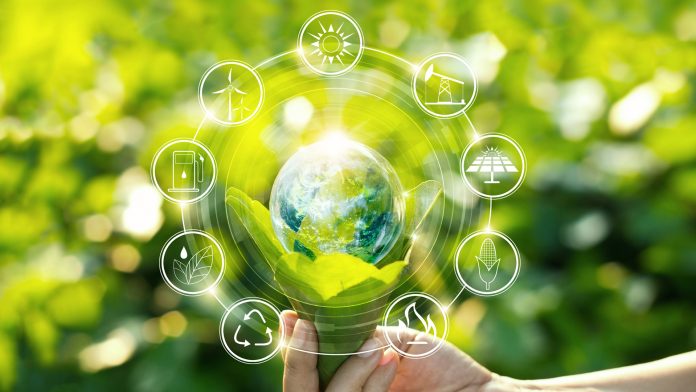
In recent years, the shift toward sustainable and renewable energy sources has gained significant momentum, driven by the escalating concerns over climate change and environmental degradation. Investing in clean energy projects is not just a trend; it’s a crucial move toward a more sustainable future. This article will explore the ins and outs of investing in clean energy projects, offering insights into why these investments matter, what options are available, and the considerations investors should take into account.
Environmental Impact: Investing in clean energy projects plays a pivotal role in reducing the reliance on fossil fuels, which are major contributors to environmental issues like air pollution and global warming. Projects such as solar power plants, wind farms, and hydroelectric facilities produce energy without emitting harmful pollutants, making them a cornerstone for a sustainable future.
Economic Benefits: Beyond environmental impact, clean energy projects can offer substantial economic benefits. Governments around the world are supporting these initiatives through subsidies and tax incentives, which can enhance the financial viability of clean energy investments. Moreover, as technology advances, the cost of renewable energy production is decreasing, making these projects more competitive with traditional energy sources.
Social Responsibility: Investing in clean energy also reflects a commitment to social responsibility. By supporting these projects, investors contribute to the creation of jobs in new and emerging sectors, promote technological innovation, and support energy independence and security.
1. Solar Energy: Solar power is one of the most popular forms of clean energy. Investments can range from small-scale residential solar panels to large solar farms. The technology has matured significantly, leading to decreased costs and increased efficiency.
2. Wind Energy: Wind energy is another robust sector, characterized by its large wind farms that can be located both onshore and offshore. The scalability of wind projects makes them attractive for a range of investors, from private firms to government entities.
3. Hydroelectric Power: Though it requires significant initial capital, hydroelectric power is a proven, reliable source of clean energy. Small-scale hydro projects are becoming more common and can be particularly effective in rural or remote areas.
4. Biomass and Biofuels: These projects convert organic materials into electricity, heat, or fuel. While there are concerns about the sustainability of certain biomass sources, responsibly managed projects can provide a constant, renewable energy supply.
5. Geothermal Energy: Geothermal projects harness the Earth’s heat. These investments are often more geographically specific but can provide a very stable energy output with minimal environmental impact.
Market Research: Understanding the market dynamics of the clean energy sector is crucial. This includes knowledge of regulatory changes, technological advancements, and the economic landscape. Markets that are heavily supported by government policies may offer more stability and lower risks.
Technology Risk: The technology in the clean energy sector is rapidly evolving. While this can lead to better efficiencies and lower costs, it also poses a risk that an investment might become obsolete. Staying informed about technological trends is essential.
Financial Assessment: Like any investment, clean energy projects require a thorough financial assessment. This includes analyzing the cost of setup, ongoing operational costs, expected return on investment, and payback periods. Financial models that take into account subsidies, incentives, and carbon credits can provide a clearer picture of an investment’s viability.
Environmental and Social Governance (ESG): Investors are increasingly considering ESG factors when making decisions. Projects that score well on ESG metrics not only contribute positively to the environment but also tend to offer lower risks and competitive returns.
The transition to a cleaner energy future is inevitable, and investing in clean energy projects offers a promising pathway for those looking to contribute to this shift while also seeking substantial returns. By understanding the types of projects available, staying current with market and technological trends, and assessing financial and ESG factors, investors can make informed decisions that align with both their financial goals and their values in sustainability. Whether you’re a seasoned investor or new to the field of green investments, the clean energy sector presents opportunities to foster a sustainable future while potentially benefiting financially. As this sector continues to evolve, staying informed and adaptable will be key to successful investing in clean energy projects.
There are two ways to invest in renewable energy: either by buying the equities or bonds of the electricity or utility companies supplying the energy, or of the companies making components for the equipment that is needed to create power.
Replacing fossil fuels with clean energy sources will prevent the environment. Investing in sustainable energy will contribute to the preservation of the environment and our health. Renewable energy usage can reduce pollution and minimize the disease rate.
Renewable investments can be affected by changes in government policies, regulations, and incentives. Changes in political priorities or the withdrawal of financial support can negatively impact the profitability and viability of renewable energy projects, posing risks to investors.
Partly, that's because wind and solar are profitable, albeit not as profitable as oil and gas. That's also because clean energy has benefits, and fossil fuels have costs, that don't show up on any spreadsheets about returns.
It's clear that renewable energy isn't a flash in the pan, but it is still considered a niche sector for investors. While no investment is risk free, the future of energy has to be more sustainable, making renewable energy a savvy and ethical investment.
Copyright © 2024 Green Pace Financial. All Rights Reserved.